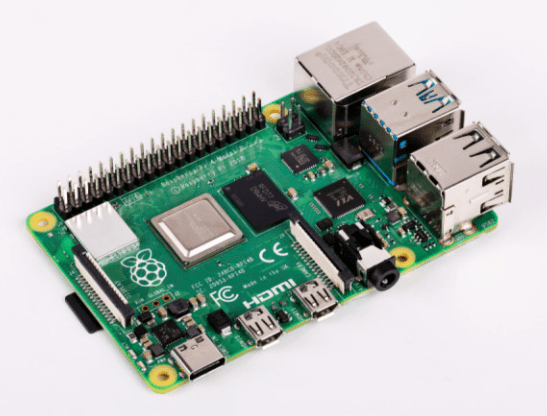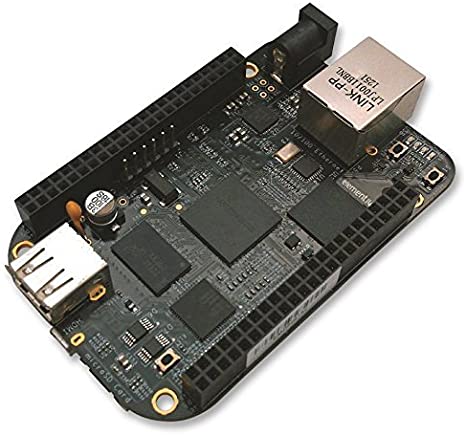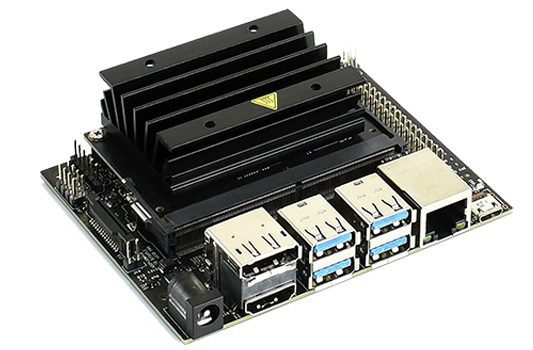If you’re looking for a powerful single board computer (SBC), you’ve likely come across the Odroid N2+. But how does it compare to other SBCs on the market? In this article, we’ll take a closer look at the Odroid N2+ and compare it to other popular SBCs.
First, let’s start with the basics. The Odroid N2+ is a small computer that runs on the ARM architecture. It features a 2.4 GHz quad-core processor, 4GB or 2GB of RAM, and an ARM Mali-G52 GPU. It also includes Ethernet, USB 3.0, and HDMI ports for connectivity.

Odroid N2+
One of the most notable features of the Odroid N2+ is its processing power. The quad-core processor and GPU make it a great option for tasks that require a lot of processing power, such as machine learning, video editing, and gaming. It also has a great performance-to-price ratio, making it an affordable option for those looking for a powerful SBC.
But how does the Odroid N2+ compare to other SBCs? Let’s take a look at some popular options:
1. Raspberry Pi 4

Raspberry Pi 4
When it comes to single-board computers (SBCs), two of the most popular options are the Odroid N2+ and the Raspberry Pi 4. While both SBCs are powerful and capable, there are some key differences between them. In this article, we’ll take a closer look at the advantages and disadvantages of the Odroid N2+ over the Pi 4.
Advantages of the Odroid N2+ over Pi 4
- Processing power: The Odroid N2+ features a 2.4 GHz quad-core processor, while the Raspberry Pi 4 has a 1.5 GHz quad-core processor. This means that the Odroid N2+ is significantly more powerful, making it a better option for tasks that require a lot of processing power.
- RAM: The Odroid N2+ comes with 4GB or 2GB of RAM, while the Raspberry Pi 4 has 2GB, 4GB, or 8GB of RAM. While the Raspberry Pi 4 has more options for RAM, the Odroid N2+ has faster memory, which can improve overall performance.
- GPU: The Odroid N2+ features an ARM Mali-G52 GPU, while the Raspberry Pi 4 has a Broadcom VideoCore VI GPU. While both GPUs are capable, the ARM Mali-G52 is considered to be more powerful and efficient.
- Connectivity: The Odroid N2+ includes Gigabit Ethernet, two USB 3.0 ports, and an HDMI 2.0 port. The Raspberry Pi 4 also includes Gigabit Ethernet, two USB 3.0 ports, and two micro-HDMI ports. However, the Odroid N2+ has a faster Ethernet port and a more modern HDMI port.
- Price: While the Odroid N2+ is more expensive than the Raspberry Pi 4, it still offers a better price-to-performance ratio. The Odroid N2+ starts at around $79, while the Raspberry Pi 4 starts at around $35.
Disadvantages of the Odroid N2+ over Pi 4
- Community support: While the Raspberry Pi 4 has a large and active community of developers and users, the Odroid N2+ has a smaller community. This can make it more difficult to find resources, tutorials, and support for the Odroid N2+.
- Compatibility: There are a lot number of supported OS for the Pi 4 than for the Odroid N2+, basically due to a large and active community as already mentioned.
- Form factor: The Odroid N2+ has a larger form factor than the Raspberry Pi 4, which can make it more difficult to fit into certain projects or enclosures.
As you can notice, the Odroid N2+ is a powerful and capable SBC that offers several advantages over the Raspberry Pi 4. However, it may not be the best option for everyone, depending on specific project requirements and preferences.
2. BeagleBone Black

BeagleBone Black
The BeagleBone Black is another popular SBC. It features a 1 GHz ARM Cortex-A8 processor, 512MB of RAM, and a PowerVR SGX530 GPU. It includes Ethernet, USB 2.0, and HDMI ports, as well as an expansion header for connecting additional hardware. The BeagleBone Black runs on a variety of Linux distributions, including Debian and Ubuntu.
What Odroid N2+ does better than the BeagleBone?
- Processing power: The Odroid N2+ features a powerful 2.4 GHz quad-core processor, while the BeagleBone Black only has a 1 GHz single-core processor. This makes the Odroid N2+ significantly more powerful and better suited for tasks that require high processing power.
- Memory: The Odroid N2+ has 2GB or 4GB of DDR4 RAM, while the BeagleBone Black has only 512 MB of DDR3 RAM. This means that the Odroid N2+ is more capable of handling memory-intensive tasks.
- Graphics: The Odroid N2+ comes with a powerful ARM Mali-G52 GPU, which is capable of running 4K displays at 60 frames per second. The BeagleBone Black does not have a dedicated graphics processor and can only output up to 720p resolution.
- Connectivity: The Odroid N2+ includes Gigabit Ethernet, two USB 3.0 ports, and an HDMI 2.0 port. It also has a dedicated eMMC module socket for expandable storage. The BeagleBone Black, on the other hand, has 10/100 Ethernet, two USB 2.0 ports, and a micro-HDMI port. It relies on microSD cards for storage.
- Community support: The Odroid N2+ has a growing community of users, with a large number of tutorials, guides, and resources available online. It is also supported by the official ODROID forums. While the BeagleBone Black has a dedicated community, it is not as large as that of the Odroid N2+.
Where BeagleBone Black wins over N2+
- Price: The Odroid N2+ is more expensive than the BeagleBone Black. The Odroid N2+ starts at around $79, while the BeagleBone Black starts at around $55.
- Compatibility: The Odroid N2+ runs on Ubuntu 20.04 LTS, which may not be compatible with all software and drivers. The BeagleBone Black runs on Debian, which is a popular and well-supported Linux distribution.
- Form factor: The Odroid N2+ has a larger form factor than the BeagleBone Black, which can make it more difficult to fit into certain projects or enclosures.
- Power consumption: The Odroid N2+ uses a 12V/2A power supply, which gives a maximum power consumption of 24 watts. In contrast, the BeagleBone Black uses a 5V/2A power supply, which gives a maximum power consumption of 10 watts.
In summary, if power consumption is a significant concern for your project, the BeagleBone Black may be a more energy-efficient option compared to the Odroid N2+. However, if you require higher processing power and graphics capabilities, the Odroid N2+ may be a better fit despite its higher power consumption.
3. Jetson Nano

Jetson Nano
The Jetson Nano is a powerful SBC that’s designed specifically for AI and machine learning applications. It features a 1.43 GHz quad-core ARM Cortex-A57 processor, 4GB of RAM, and an NVIDIA Maxwell GPU. It also includes Ethernet, USB 3.0, and HDMI ports. The Jetson Nano runs on a variety of Linux distributions, including Ubuntu and JetPack.
Odroid N2+ wins in…
- More Powerful: The Odroid N2+ is a more powerful device compared to the Jetson Nano. It is equipped with an Amlogic S922X SoC, which has a quad-core ARM Cortex-A73 and dual-core ARM Cortex-A53 CPUs, and an ARM Mali-G52 GPU. This makes the Odroid N2+ more capable of running complex applications, handling multiple tasks at once, and even running machine learning models.
- Better Storage Options: The Odroid N2+ has better storage options compared to the Jetson Nano. It has a built-in eMMC module, which provides faster read and write speeds compared to the Jetson Nano’s microSD card slot. Additionally, it also supports SATA and NVMe SSDs, which allow for even faster storage options.
- Lower Cost: The Odroid N2+ is also more affordable than the Jetson Nano. It is priced lower and does not require any additional accessories or modules to function, unlike the Jetson Nano.
- More Open-Source Friendly: The Odroid N2+ is more open-source friendly than the Jetson Nano. It has support for multiple operating systems, including Ubuntu, Debian, and CoreELEC, which are all open-source. Additionally, it has better support for open-source software and drivers, making it easier for developers to work with.
Odroid N2+ loses in…
- Limited AI Support: While the Odroid N2+ is more powerful, it has limited AI support compared to the Jetson Nano. The Jetson Nano has a dedicated AI processor, the NVIDIA GPU, which makes it better suited for machine learning and AI-related tasks.
- Lower Community Support: The Odroid N2+ has a smaller community compared to the Jetson Nano. This means that there are fewer resources, guides, and tutorials available, making it harder for beginners to get started.
The Odroid N2+ is more powerful, has better storage options, is more affordable, and is more open-source friendly, while the Jetson Nano has better AI support and larger community support. Ultimately, the choice between the two will depend on the user’s specific needs and preferences.
Conclusion
Ultimately, the choice of which SBC to use will depend on your project’s specific needs and requirements. If you require a powerful SBC with excellent processing power and graphics capabilities, the Odroid N2+ is an excellent choice. However, if you’re on a tight budget and require lower power consumption, the BeagleBone Black may be a better fit. The Raspberry Pi 4 is a great all-around SBC that offers a balance of processing power, graphics capabilities, and community support.
